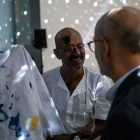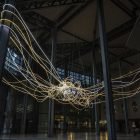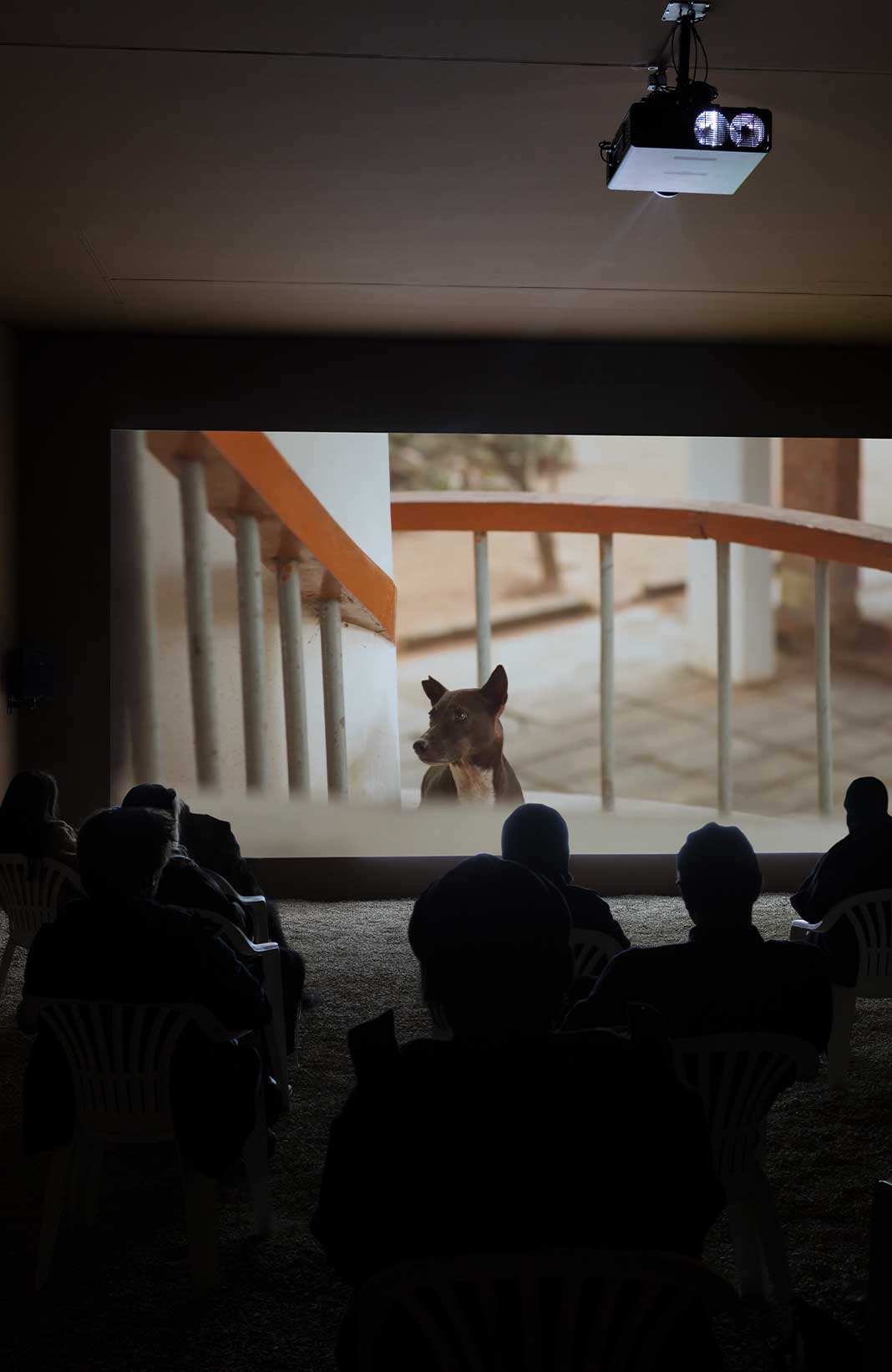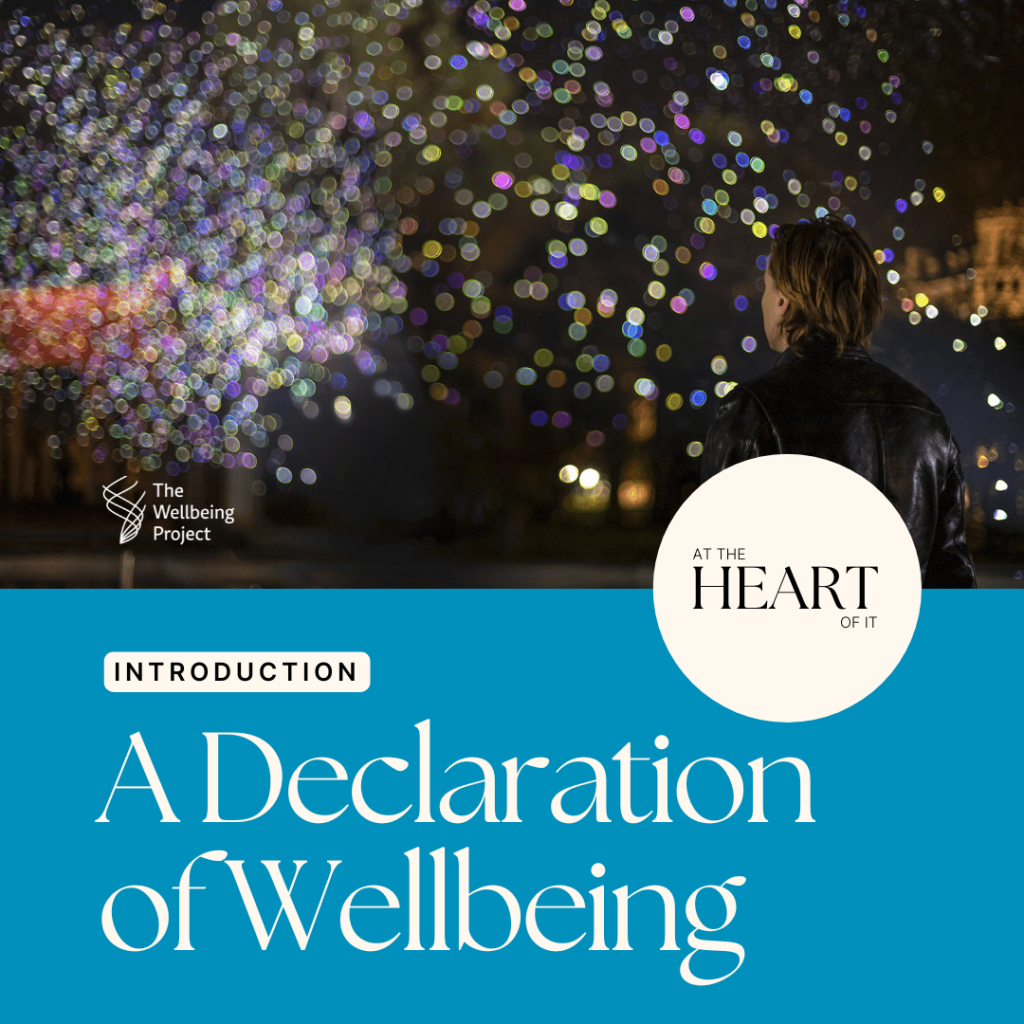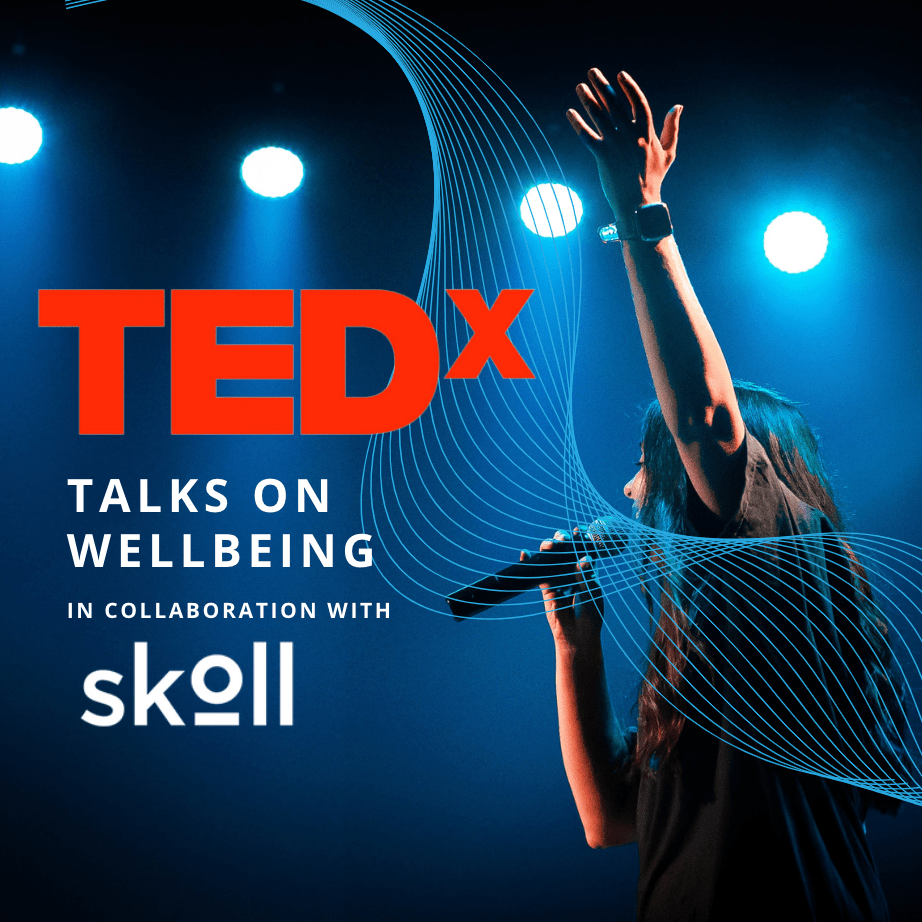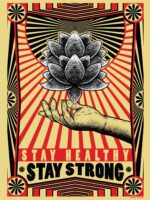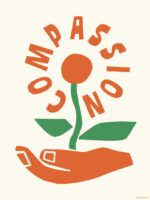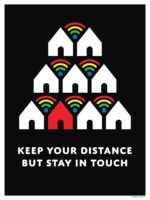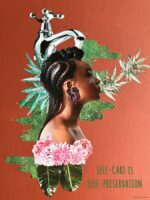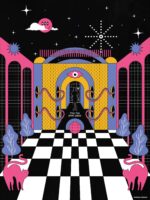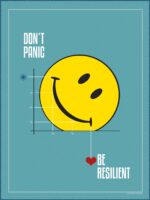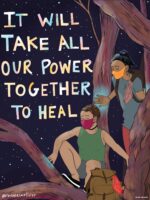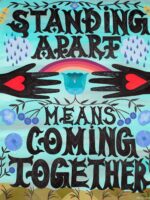Nikhil Chopra’s participation in the Summit involves a residency period and a 2-day long performance, during which the artist will engage in both everyday actions, and the creation of a monumental drawing and atmospheric mise en scene.
Location: Aldama Fabre
OPEN TO THE PUBLIC
Date: June 2 – 3
Time: 10am – 10am CET. 24 hour performance
On the second day, the performance will incorporate Bilbao’s citizens and Summit attendees around a celebration of community and art. The paintings, drawings and other objects created along these actions are a residual component of the performance. Bending gender, shape and identity, India’s best known performance artist uses personal history to question nationhood and existentialism.
Born in Kolkata and based in Goa, Nikhil Chopra’s art focuses on performance. The body becomes a tool and canvas for art. He is best known for durational performances in which he takes on the persona of different characters, inspired by personal familial history and national, regional and colonial histories.
Nikhil Chopra has performed and exhibited his art before a global audience since the mid 2000s. His art has featured in gallery and institutional shows, art fairs, and other major art events worldwide. In the live performance “Lands, Waters, and Skies” (2019), the artist worked in the galleries of The Metropolitan Museum of Art for nine consecutive days, adopting various personae and critically engaging with the museum’s collection and its organizational principles.
ESPAÑOL
La participación de Nikhil Chopra en la Cumbre implica un periodo de residencia y una actuación de dos días de duración, durante la cual el artista realizará tanto acciones cotidianas como la creación de un dibujo monumental y una puesta en escena atmosférica.
En el segundo día, la presentación incorporará a los ciudadanos de Bilbao y a los asistentes a la Cumbre en torno a una celebración de la comunidad y el arte.Las pinturas, dibujos y otros objetos creados a lo largo de estas acciones son un componente residual de la actuación. Doblando el género, la forma y la identidad, el artista de performance más conocido de la India utiliza la historia personal para cuestionar la nación y el existencialismo.
Nacido en Calcuta y establecido en Goa, el arte de Nikhil Chopra se centra en la representación. El cuerpo se convierte en una herramienta y un lienzo para el arte. Es conocido por sus actuaciones de larga duración en las que adopta la personalidad de distintos personajes, inspirados en su historia familiar y en la nacional, regional y colonial.
Nikhil Chopra ha actuado y expuesto su arte ante un público mundial desde mediados de la década de 2000. Su arte ha aparecido en galerías y exposiciones institucionales, ferias de arte y otros importantes eventos artísticos en todo el mundo. En la obra en vivo “Lands, Waters, and Skies” (2019), el artista trabajó en las galerías del Museo Metropolitano de Arte durante nueve días consecutivos, adoptando varios personajes y comprometiéndose críticamente con la colección del museo y sus principios organizativos.
SCIENTIA, Grimanesa’s work for the Wellbeing Summit in Bilbao, is a monumental, site-specific light sculpture that will be installed at the Atrium of Azkuna Zentroa, opening for the Summit and remaining in place throughout the summer of 2022.
Location: Azkuna Zentroa – Atrium
OPEN TO THE PUBLIC
Date: May 31 – August 30
Time: 9am – 9pm
Creating monumental sculptures often makes Amorós consider how our environment affects our state of mind and well-being. Her new site-specific light sculpture SCIENTIA will engage visitors in a dialogue with the surrounding architecture and community, encouraging moments of self-reflection and personal realization while simultaneously creating connection through the medium of light.
The project’s name SCIENTIA is a Latin word meaning knowledge and knowing, experience and expertise, but going beyond a personal understanding. The word implies a socially interactive activity, the seeking and sharing of knowledge. This artwork will explore the human connection using our elemental knowledge of the world: fire, water, earth, and light. Through this primordial immersion, SCIENTIA provides a means of accessing our emotional selves within a manifested mental space that nurtures well-being and promotes community engagement.
Grimanesa Amorós was born in Lima, Peru, and lives and works in New York City. She is an interdisciplinary artist whose diverse interests include social history, scientific research, and critical theory. A direct relationship to technology is one of the distinctive features of Amorós’ practice. Her works incorporate video, lighting, and technological elements to create monumental sculptures involving architecture and engaging communities.
ESPAÑOL ESPAÑOL
SCIENTIA, la obra de Grimanesa para The Wellbeing Summit, es una escultura de luz monumental y específica para el lugar que se instalará en el Azkuna Zentroa, que se inaugurará para la Cumbre y permanecerá en el lugar durante todo el verano de 2022.
La creación de esculturas monumentales hace que Amorós se plantee a menudo cómo nuestro entorno afecta nuestro estado de ánimo y bienestar. Su nueva escultura lumínica SCIENTIA, específica para el lugar, hará que los visitantes entablen un diálogo con la arquitectura y la comunidad circundantes, fomentando momentos de autorreflexión y realización personal y creando al mismo tiempo una conexión a través del medio de la luz.
El nombre del proyecto, SCIENTIA, es una palabra latina que significa conocimiento y saber, experiencia y pericia, pero que va más allá de la comprensión personal. La palabra implica una actividad socialmente interactiva, la búsqueda y el intercambio de conocimientos. Esta obra de arte explorará la conexión humana utilizando nuestro conocimiento elemental del mundo: fuego, agua, tierra y luz. A través de esta inmersión primordial, SCIENTIA proporciona un medio para acceder a nuestro yo emocional dentro de un espacio mental manifiesto que nutre el bienestar y promueve el compromiso de la comunidad.
Grimanesa Amorós nació en Lima, Perú, y vive y trabaja en Nueva York. Es una artista interdisciplinar cuyos diversos intereses incluyen la historia social, la investigación científica y la teoría crítica. La relación directa con la tecnología es uno de los rasgos distintivos de la práctica de Amorós. Sus obras incorporan vídeo, iluminación y elementos tecnológicos para crear esculturas monumentales que implican a la arquitectura y comprometen a las comunidades.
Filmed at the Institute of Fine Arts of Dhaka, Bangladesh, and shown at The Wellbeing Summit for Social Change, Daniel’s Fog Dog follows the daily and nightly activities of a group of stray dogs that live in the school.
Location: Guggenheim Bilbao
OPEN TO THE PUBLIC
Date: June 1 – June 3
Time: 11am – 7pm
The building was designed by pioneering Bangladeshi architect Muzharul Islam (1923-2012) and is characterized by the organic relationship between its interior and the surrounding green urban spaces. The dogs’ daily existence connects with many presences and signs – students and guardians, birdcalls and car horns, broadcasts, and spiritual entities – which coexist more and less harmonically with one another. The film is an exploration of interdependencies and how our attitudes affect everyone else – as such, it is a vivid and compelling commentary on the interconnected nature of collective Wellbeing.
Born in Barcelona, Daniel Steegman lives and works in Rio de Janeiro. From drawing to film, passing through
sculpture, installation and landscape interventions, Daniel Steegmann Mangrane’s work questions our relationship to the environment and invites the viewer to be physically involved in his projections and displacements. His video pieces and installations engage with the imagination of the spectator and often traces the boundary where nature meets artifice.
Daniel’s recent solo shows include Dog Eye, Kunsthalle Münster, Münster, Germany (2020); A Leaf-Shaped Animal Draws The Hand, Pirelli HangarBicocca, Milan (2019); Ne voulais prendre ni forme, ni chair, ni matière, Institut d’Art Contemporain de Villeurbanne, Villeurbanne (2019). His work has been also featured at the group shows Liverpool Biennial (2021); Taipei Biennial (2020); Concrete Contemporary, Museum Haus Konstruktiv, Zürich (2019).
ESPAÑOL
Filmada en el Instituto de Bellas Artes de Dhaka, Bangladés; Fog Dog de Daniel Steegmann Mangrané sigue las actividades diurnas y nocturnas de un grupo de perros callejeros que viven en la facultad.
El edificio fue diseñado por el pionero arquitecto bangladés Muzharul Islam (1923-2012) y se caracteriza por su orgánica relación entre su interior y los espacios verdes urbanos que lo rodean. La existencia diaria de los perros conecta con muchas presencias y señales (alumnos y guardianes, cantos de pájaros, bocinas de coches, emisiones y entidades espirituales) que coexisten más o menos armónicamente entre sí.
La película es una exploración de las interdependencias y como las actitudes afectan a todos los demás; como tal es un comentario vívido y convincente sobre la naturaleza interconectada del bienestar colectivo.
Nacido en Barcelona, Daniel Steegman vive y trabaja en Río de Janeiro. Desde dibujar, hasta filmar, pasando a través de esculturas e instalación e intervenciones paisajísticas, el trabajo de Daniel Steegmann Mangrane cuestiona nuestra relación con el ambiente e invita al espectador a estar envuelto físicamente en sus proyecciones y desplazamientos. Sus piezas de video e instalaciones conectan con la imaginación del espectador y traza la barrera donde la naturaleza se encuentra con el artificio.
Entre sus obras en solitario más recientes se encuentran: Dog Eye, Kunsthalle Münster, Münster, Alemania (2020); A Leaf-Shaped Animal Draws The Hand, Pirelli HangarBicocca, Milán (2019); Ne voulais prendre ni forme, ni chair, ni matière, Instituto de Arte Contemporáneo de Villeurbanne, Villeurbanne (2019). Sus obras también ha sido publicadas en exhibiciones grupales: Liverpool Biennial (2021); Taipei Biennial (2020); Concrete Contemporary, Museum Haus Konstruktiv, Zúrich (2019).
WELLbinar: The relationship between Art and Wellbeing, featuring Joshua Roman and Jazmine Williams WELLbinar: The relationship between Art and Wellbeing, featuring Joshua Roman and Jazmine Williams
Hosts: Sharon Salzberg & Parker J. Palmer
Guest: Joshua Roman & Jazmine Williams
March 15, 2022
Hosts Sharon Salzberg and Parker J. Palmer are joined by Joshua Roman, cellist, composer and curator, and Jazmine Williams, poet writer and producer, to discuss the power of the arts for individuals and communities. Through the live practice of “slow listening,” we explore how the quality of experiencing artwork connects to our feelings and our wellbeing.
Related Posts Related Posts
INTERVIEW WITH GREEN STRING NETWORK INTERVIEW WITH GREEN STRING NETWORK
What is the Green String Network?
Green String Network (GSN) is an African based organization. We are a network of like-minded individuals and organizations working on developing trauma-informed peacebuilding. We believe that there is a direct link between levels of trauma in vulnerable communities and the challenges faced with justice, reconciliation, security, and overall social wellbeing.
How does your work connect to inner wellbeing and social change?
Violence begins with a thought, yet few interventions focus on the mental wellbeing of at-risk communities, and institutions like the police. GSN concentrates on trauma as a root cause of instability not just a consequence of violence and instability. By connecting our inner wellbeing to issues of social justice and change we believe we are mentally and emotionally preparing those working on issues of violence, neglect, abuse and other difficult issues with a more holistic tool kit.
How do you believe art can be used for social impact?
GSN understands the transformative power of art. We utilize art to depict the experiences of our program participants. In using art as a source of individual reflection and communal dialogue, we strengthen relationships and raise awareness regarding violence, adversity as well as healing practices.
Please tell us about these individual stories that the artists have created.
The artists were given a summary of The Wellbeing Project’s research on “Wellbeing for social entrepreneurs.” From reading the research, the artists developed a set of stories.
The two artists were from Kenya and South Sudan, GSN has worked with both several times in the past.
David Radoli grew up in Mombasa but went to school in Nairobi. He is a graduate of the Technical University of Kenya. Radoli, as he prefers to be called, has been in the media/art industry for over 18 years. He has extensive experience in publishing, advertising, storyboarding and copyrighting. Due to his versatility in arts, he has worked for McCann Erickson, a leading advertising agency. Radoli has a strong preference for working with ink, pen, and watercolors. He has a passion for painting human figures and is an excellent caricaturist.
Deng Majid Chol Deng recalls drawing at home and enjoying pictures in the books at school. He improved his drawing skills initially by copying the picture and was encouraged by his family, who liked his drawings of daily life. Later, he gained a scholarship to study at Nasser University in Tripoli, Libya. It was a totally new environment for him and he was struck by the uniformity of opinions. After initially working using his Chemistry degree, he became connected with The Roots Project in 2011 and now displays his paintings there as well as holding exhibits in other locations.
What is the value of using artists to communicate on this subject?
An artist interprets a story based on his/her own life experiences. Images which emerge are not prescriptive and allow those who view them, their own interpretations based on their own life experiences. Two people can look at the same painting and each sees a completely different story in the painting.
What is wellbeing for GSN?
Wellbeing is an approach targeting the emotional, cognitive, physical, spiritual and social aspects of the human experience. It is about feeling happy, healthy, socially connected, and purposeful.
Are there any learnings you would like to share with other organizations and communities?
1. Healing is a critical part of stabilization, development, governance, and peacebuilding processes. Finding a way to work through personal pain can support the larger communities healing process.
2. For the leaders of the social change movements, understand that what you experience continues impacting you — your ability to love, show emotions and empathy. Do not let the violence and adversity you are challenging change you to be someone you are not. Take the time for your own self-care and connect to a larger community of changemakers. Take the time you need with your family and other friends. Find joy outside of your work. And be kind and lovely to yourself.
How can people connect with GSN?
Follow our work on our website — we will be starting a new blog shortly about the stories of transformation taking place in our programs.
Or on:
Facebook Twitter Instagram




